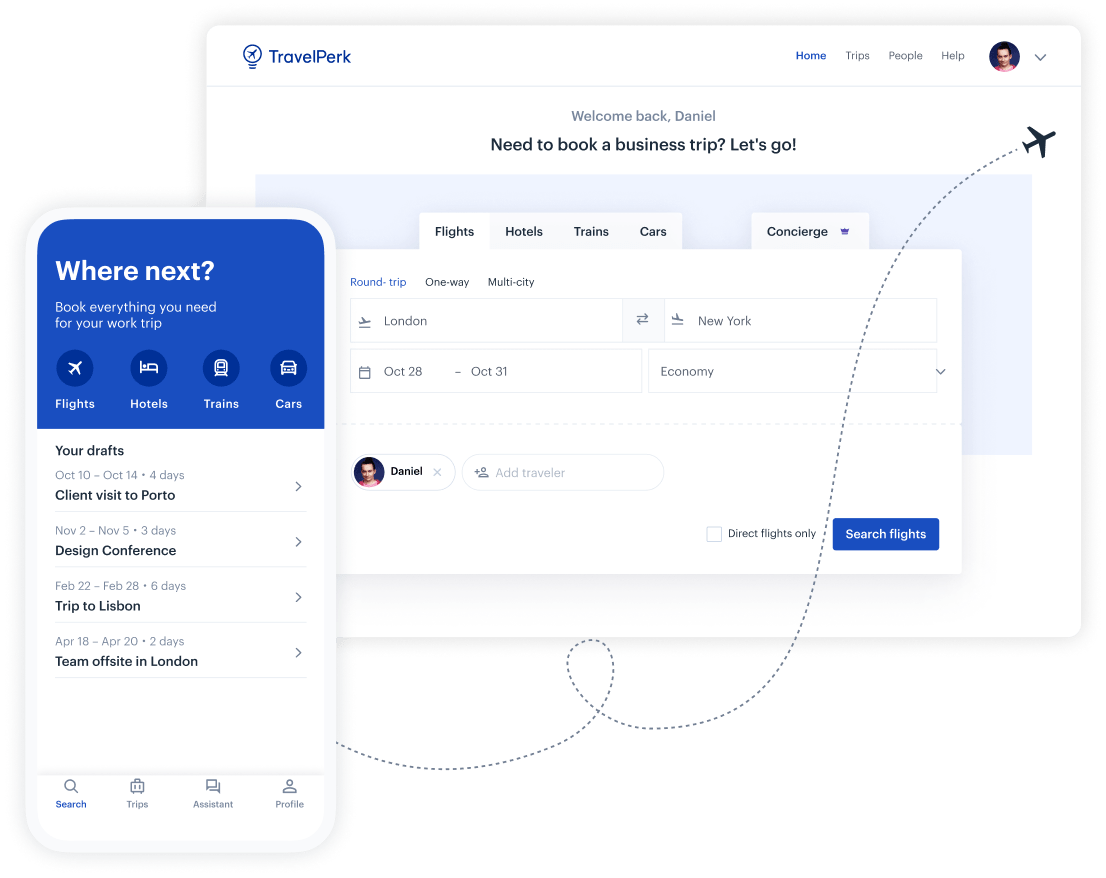Corporate per diem travel policy
Now you know all there is to know about per diem allowances; it’s time to share that knowledge with your employees. A corporate travel policy that includes information on per diem payments is key to keeping your employees in the loop and in line with travel budgets.
Keeping all your travel information in one place takes the hassle out of business travel and lets your employees know they’re covered when traveling on business. It’s a one-stop-shop for all your employees’ business travel questions, from allowances to per diem reimbursement.
First, let’s quickly recap the key aspects of per diem allowances.

Per diem allowances for traveling employees: a recap
Per diem payments are daily allowances given to traveling employees to cover costs associated with business travel and trips. The allowances and methods of determining per diem allowances vary in different countries, and alternative arrangements can be arranged in some cases.
In the UK, rates are decided by HMRC. They cover meal expenses and incidental expenses (M&IE). Lodging expenses for overnight stays must be arranged with HMRC via a bespoke rate application. In order to do this, businesses must provide previous business expenditure proof.
In the continental United States (CONUS), which excludes Alaska and Hawaii, rates are decided by the U.S. General Services Administration (GSA).
They separate rates into lodging rates and M&IE rates and provide figures for both. Unlike in the UK, the Internal Revenue Service (IRS) requires expense reports for employee travel.
There are two methods to determine per diem allowances in the U.S.:
- Standard per diem rates: individual per diem rates for different locations.
- High-low substantiation method: ‘high-cost’ locations take one rate; all other locations adopt the ‘low-cost’ rate.
The main benefit of per diem allowances is they aren't considered to be taxable income. They’re also beneficial as they offer flexibility to the employee in how they spend travel allowances. Per diem payments are also less hassle than reimbursing actual expenses, as the latter requires expense reports and receipts for proof of per diem expenses.
The potential downsides to per diem payments are that they can push employees to cut corners to pocket any excess. The same trust offered as a benefit can ultimately be abused.
Find out your per diem allowance for your upcoming trip
Our per diem calculator works out exactly how much you’re entitled to spend when you travel for work.
Corporate travel policy for per diem payments
Corporate travel policies are useful for business travelers as they’re an easy way to check their allowances while on a business trip. They should provide all the key information for employees, so they can follow corporate guidelines and avoid mistakes.
A well-put-together corporate travel policy includes information on the company’s per diem policy. It should provide employees details on:
- Reimbursable business expenses
- Non-reimbursable expenses
- Reimbursement method (if not using a corporate credit card)
- International travel policy
Check out our full guide on creating a sample travel policy for employees.

It’s also important to ensure your employees aren’t at risk when traveling, and part of this is establishing a corporate travel risk management policy. Here are some key categories to consider when putting a travel risk management policy together:
1. Introduction
The document should start by outlining the policy’s aims and objectives and the company’s commitment to ensuring employees traveling on business are safe when doing so.
2. Roles and responsibilities
This section outlines the key points of contact when it comes to travel risk management. It should inform all parties of their roles within the process and remind everyone of their responsibilities while away on travel.
3. Travel status and approval
This section details the proposed travel to obtain approval before travel. This should list potential risks faced by the traveling employee and how to minimize those risks beforehand.
These include location-based risks, such as the standard risk associated with traveling somewhere, and individual-based risks, depending on the individual traveling.
4. Incident reporting
The policy must address the employer’s responsibilities and limitations when it comes to assisting employees traveling for business purposes. In the case that an employee does encounter an issue while away, the steps for how to report the issue must be clearly defined in the travel policy.
Information on how to get assistance should be clear, ideally with a telephone number or email address for quick support in an emergency. The policy also needs to be clear on how to report incidents and who’s responsible for ensuring they’re followed up.
5. Insurance
Finally, the policy should address what is covered and what isn’t. This includes the loss of personal belongings and the need for medical care while on business travel. It should be accessible to employees and easy to understand—a people-friendly approach is essential.
Wrapping Up
That’s a wrap on per diem payments for traveling employees—from domestic to international business trips. Per diem is a great way to monitor business travel expenditure and ensure that all travel expenses are tax-deductible.
Per diem allowances are a key part of any corporate travel policy, whether they’re benchmark rates or bespoke rates. Keep employees informed of what they can and can’t afford while away on business. For help creating a comprehensive corporate travel guide, head to our full guide here, and don’t hesitate to get in touch with the TravelPerk team for any other business travel needs.


